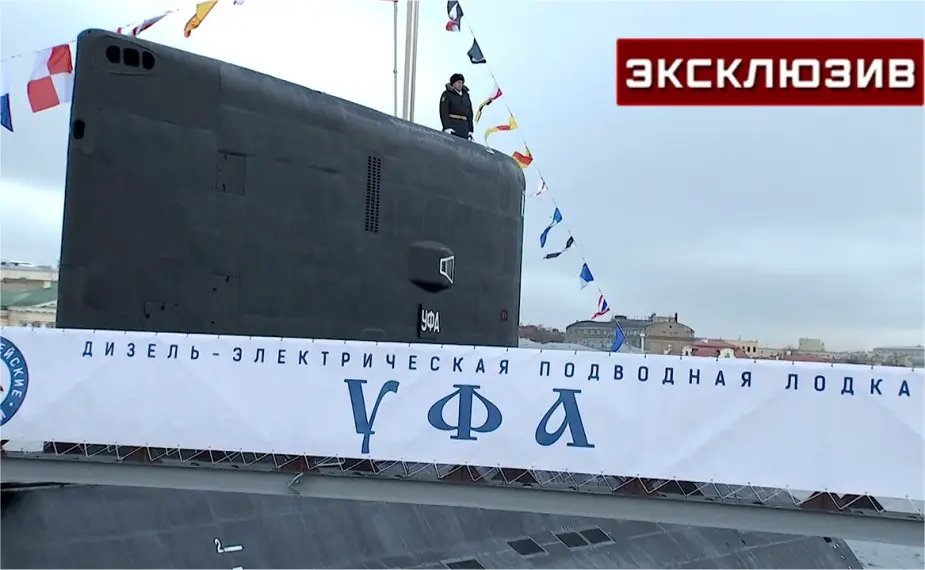Breaking news
Russian Navy officially commissions Kilo class submarine Ufa.
According to information published by Interfax on November 16, 2022, the Project 636.3 (Improved Kilo-class) diesel-electric submarine Ufa, built for the Pacific Fleet, joined the Russian Navy.
Follow Navy Recognition on Google News at this link
 Russian Project 636.6 (Varshavyanka class) submarine Ufa. (Picture source: TVZvezda)
Russian Project 636.6 (Varshavyanka class) submarine Ufa. (Picture source: TVZvezda)
In accordance with the announced order of the Commander-in-Chief of the Russian Navy, the Ufa was enlisted in the Pacific Fleet. She became the fourth in a series of six Project 636.3 submarines under construction for the Pacific Fleet.
The ceremony took place in St. Petersburg on the territory of the United Shipbuilding Corporation's enterprise Admiralty Shipyards.
About the class of submarines
Project 877 was developed at the Rubin Central Design Bureau in the 1970s for export to the Warsaw Pact countries (hence its name - "Varshavyanka". In the 1990s, it was modified and given the number 636.
There are 16 Project 636 submarines in operation: two in Russia (including the Rostov-on-Don), 10 in China, and two each in Algeria (two more have been ordered) and Vietnam (four more have been ordered). The current upgraded version of the project is designated 636.3 and, according to NATO standards, is of the Improved Kilo class.
The project was deemed very successful based on a number of key parameters, so it was decided to continue its production with the necessary improvements as new technologies and weapons emerge.
The reasons for Project 636's enviable "longevity" are that the Improved Kilo-class submarines showed the best combination of combat and technical characteristics that make them an extremely dangerous opponent. In a number of their indicators, they are noticeably superior to their foreign counterparts.
One of the most important tasks of a submarine is to remain unnoticed underwater without the noise of working machines, so submarines of the "Varshavyanka" project have an advantage over most submarines of the world, being distinguished by their high indicators of low noise: the double hull, retractable rudders, shock-absorbing platforms for engines, and special external hydroacoustic coatings provide the maximum possible sound insulation and make it difficult for the enemy to detect the boat.
In electric-powered mode, the submarine becomes virtually inaudible and is able to "sneak up" on the enemy almost up close. Experts do not rule out that the recent scandal with the still not found submarine off the Swedish coast was caused by the Warshavyanka-class submarine, which was left undetected and moved away from the area it was searched in.
The submarine is capable of diving to a depth of 300 meters and staying in autonomous navigation for 45 days, and its hull is designed to produce as little noise underwater as possible and to have the best hydrodynamic shape. This has resulted in a loss of some of the submarine's seaworthiness - on the surface, it can reach speeds of up to 17 knots, while in a submerged position it can reach 20 knots.
In optimum running mode, the submarine is capable of going up to 400 miles underwater, and its total range reaches 7,500 miles. She is 73.8 meters long, has a maximum width of 9.9 meters, and has a surface displacement of 2,350 tons. A crew of 52 is required to operate the submarine.




























